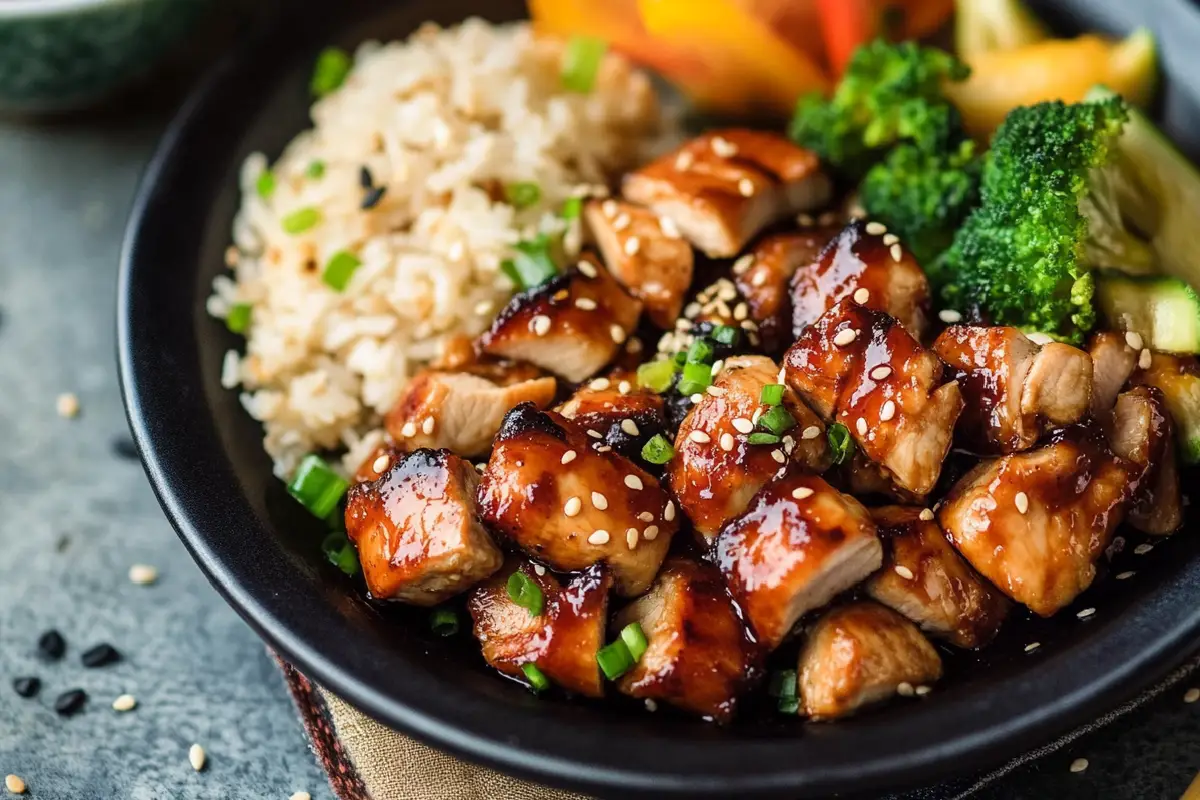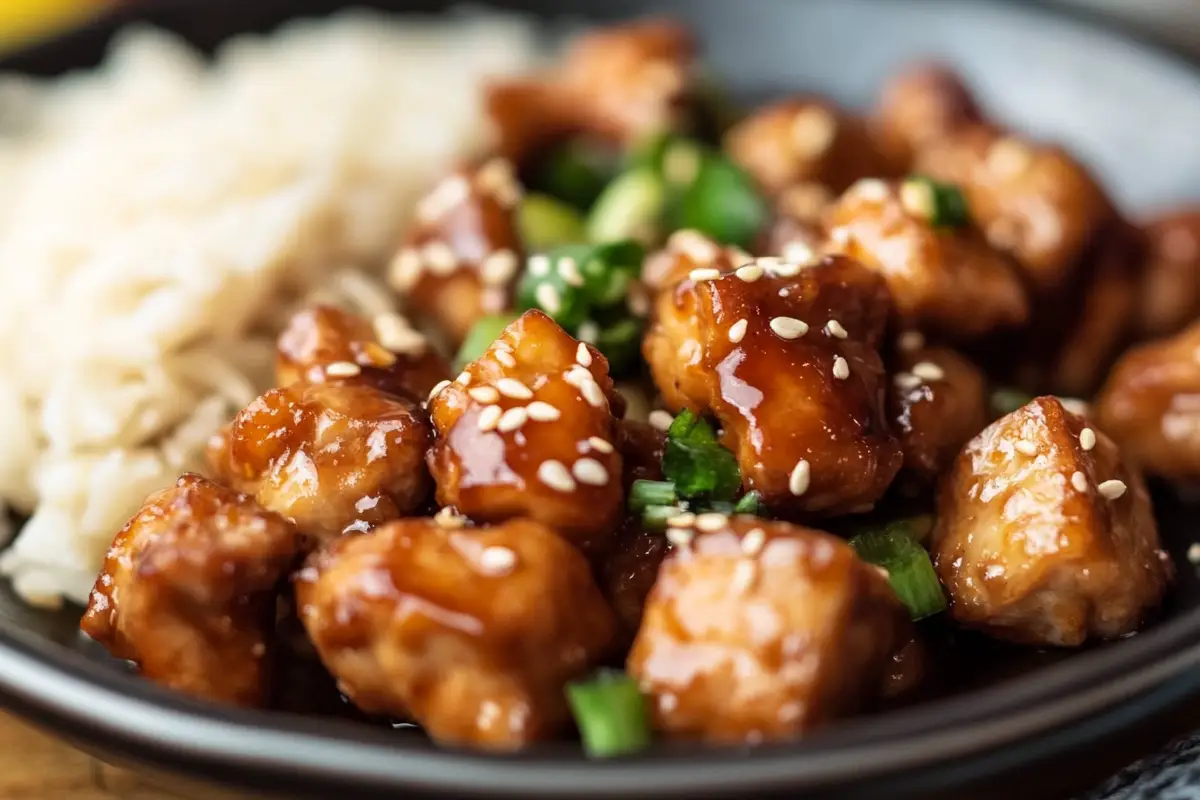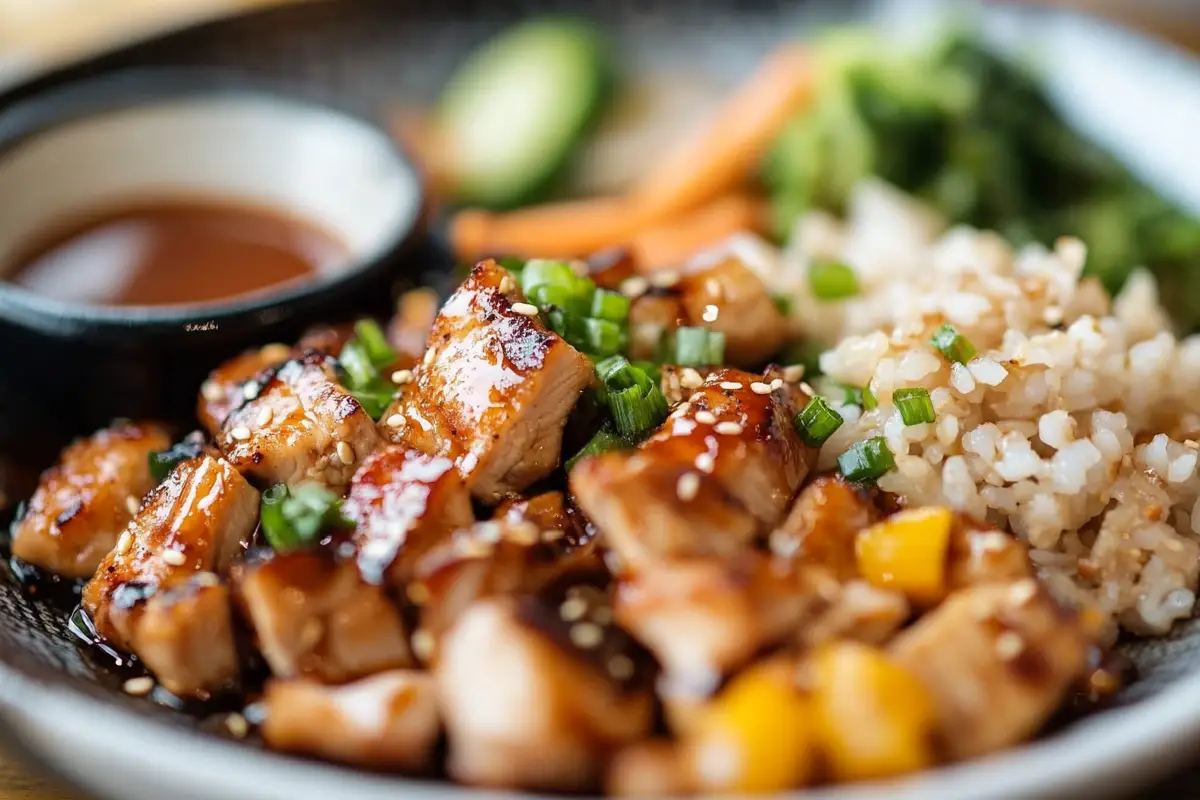Hibachi-style cooking is not only known for its theatrical flair but also for the rich, savory, and sometimes sweet sauces that accompany the sizzling meats, vegetables, and seafood. The sauces used in Hibachi cooking are an essential element that ties all the flavors together, and they provide the perfect contrast to the grilled dishes. Whether you’re dining at a Japanese steakhouse or trying to recreate the Hibachi experience at home, understanding these sauces is key to elevating the meal.
In this article, we’ll dive into the most common Hibachi sauces, their unique flavor profiles, and how they complement various Hibachi dishes. Additionally, we’ll explore how to recreate these sauces at home, health considerations, regional variations, and answer frequently asked questions about these much-loved sauces.
What is Hibachi?
Before we delve into the sauces, it’s essential to understand what Hibachi cooking entails. Traditionally, Hibachi refers to a type of Japanese grill that uses an open grate over a charcoal flame. However, in modern-day restaurants, particularly in the United States, Hibachi has evolved to describe the art of cooking on a flat-top grill. This method allows chefs to cook everything from shrimp and steak to vegetables and rice, often with dazzling flair and fire tricks.
Hibachi chefs are not just experts in cooking; they entertain as they slice, dice, and flip food right in front of you. The experience is completed by a variety of flavorful sauces that add depth and contrast to the simple grilled dishes. These sauces range from creamy and tangy to spicy and savory, each enhancing the overall flavor of the meal.
The Most Common Sauces Used at Hibachi
At any Hibachi restaurant, you’ll likely encounter several sauces. Here’s a breakdown of the most common ones, each with its unique flavor profile:
- Yum Yum Sauce: A creamy, sweet sauce made with mayonnaise, ketchup, and spices such as garlic powder and paprika. It’s sometimes called White Sauce or Shrimp Sauce and is typically served alongside seafood, particularly shrimp.
- Ginger Sauce: Made from fresh ginger, soy sauce, vinegar, and garlic, this sauce is tangy and refreshing. It’s perfect for balancing the richness of grilled meats like steak and chicken.
- Teriyaki Sauce: A sweet and savory sauce made from soy sauce, mirin, sake, and sugar. Teriyaki is often used as a glaze for meats and vegetables, adding a glossy finish and a rich umami flavor.
- Garlic Butter: A simple but decadent sauce made from melted butter and garlic. Often served over fried rice, shrimp, and vegetables, this sauce brings a savory richness that complements the grilled items perfectly.
- Mustard Sauce: A tangy, slightly spicy sauce made with mustard, soy sauce, and heavy cream. It’s often paired with steak, offering a sharp contrast to the smoky grilled flavors.
Each of these sauces plays a pivotal role in the Hibachi dining experience, enhancing the already smoky, grilled flavors of the meats and vegetables.
Popular Hibachi Sauces

Let’s explore the specifics of these sauces in more detail, focusing on their ingredients, flavor profiles, and ideal pairings.
Yum Yum Sauce
- Ingredients: Mayonnaise, ketchup, garlic powder, paprika, sugar, and vinegar.
- Flavor Profile: Creamy and slightly sweet with a subtle tang.
- Best Paired With: Shrimp, chicken, and fried rice. Yum Yum Sauce is a favorite for dipping and adds richness to any dish.
This sauce is the most recognizable and often the most requested at Hibachi restaurants. It’s beloved for its mild, approachable flavors that appeal to a broad audience. Many restaurants have their secret twist on this sauce, but the basics remain the same.
Ginger Sauce
- Ingredients: Fresh ginger, soy sauce, vinegar, garlic, and a pinch of sugar.
- Flavor Profile: Tangy and refreshing, with a sharp bite from the ginger.
- Best Paired With: Grilled meats such as steak and chicken. It also works well as a dipping sauce for vegetables.
Ginger Sauce is light and invigorating, offering a contrast to the heavier flavors in Hibachi cooking. It’s particularly great with meats, as its acidic base cuts through the richness of grilled steak and chicken. For a delicious homemade version, consider using freshly grated ginger for the most vibrant flavor.
Teriyaki Sauce
- Ingredients: Soy sauce, sake, mirin, and sugar.
- Flavor Profile: Sweet and savory, with a rich umami flavor.
- Best Paired With: Chicken, steak, vegetables, and seafood. Teriyaki sauce is commonly used as a glaze during the cooking process, adding a shiny and flavorful coating to the food.
The sweetness of Teriyaki Sauce makes it a versatile favorite, as it complements everything from grilled meats to sautéed vegetables. It’s perfect for those who prefer a sweeter sauce over tangy or creamy options. This sauce is widely available pre-made, but making it from scratch allows you to adjust the sweetness to your preference.
Garlic Butter
- Ingredients: Butter, garlic, and parsley.
- Flavor Profile: Rich and savory with a pronounced garlic flavor.
- Best Paired With: Shrimp, fried rice, and vegetables.
Garlic Butter is an indulgent addition to any Hibachi meal. While simple, its rich, buttery base enhances the flavors of whatever it touches. Often used to finish fried rice or grilled shrimp, this sauce is a must for garlic lovers. Its simplicity makes it incredibly easy to replicate at home.
Mustard Sauce
- Ingredients: Mustard, soy sauce, heavy cream, and garlic.
- Flavor Profile: Tangy and slightly spicy.
- Best Paired With: Steak and chicken.
Mustard Sauce is the perfect complement to grilled steak, adding a bit of heat and acidity that cuts through the richness of the meat. While not as universally loved as Yum Yum or Teriyaki Sauce, it’s a favorite among those who enjoy a little kick in their sauce.
DIY Hibachi Sauces You Can Make at Home
Bringing the Hibachi experience into your home kitchen can be as easy as whipping up a few of these sauces. Here are some simple recipes to help you recreate the flavors of your favorite Hibachi restaurant:
Homemade Yum Yum Sauce
Ingredients:
- 1 cup mayonnaise
- 2 tablespoons ketchup
- 1 tablespoon rice vinegar
- 1 teaspoon garlic powder
- 1 teaspoon paprika
- 1 tablespoon sugar
Instructions:
- Mix all the ingredients together in a bowl.
- Adjust the seasonings to taste (more vinegar for tanginess, more sugar for sweetness).
- Let it sit in the refrigerator for at least 30 minutes to allow the flavors to meld.
Homemade Ginger Sauce
Ingredients:
- 1/4 cup soy sauce
- 2 tablespoons rice vinegar
- 2 tablespoons freshly grated ginger
- 1 clove garlic, minced
- 1 tablespoon sugar
Instructions:
- Whisk all the ingredients together in a bowl until the sugar is dissolved.
- Serve immediately or refrigerate for up to one week.
Homemade Teriyaki Sauce
Ingredients:
- 1/4 cup soy sauce
- 2 tablespoons mirin
- 2 tablespoons sake
- 2 tablespoons sugar
Instructions:
- Combine all the ingredients in a saucepan and simmer over medium heat until thickened.
- Use as a glaze for chicken, steak, or vegetables.
Homemade Garlic Butter
Ingredients:
- 1/2 cup unsalted butter
- 3 cloves garlic, minced
- 1 tablespoon fresh parsley, chopped
Instructions:
- Melt the butter in a small saucepan over low heat.
- Add the garlic and cook until fragrant, about 2 minutes.
- Stir in parsley and remove from heat.
These simple recipes allow you to recreate your favorite Hibachi sauces at home with minimal effort. Each sauce can be adjusted to your personal taste, making them versatile additions to any meal.
Health Considerations of Hibachi Sauces
As delicious as these sauces are, they can be high in calories, sodium, and fat. However, there are ways to enjoy Hibachi sauces while keeping things healthier:
- Lower the Sodium: Many Hibachi sauces contain soy sauce, which is high in sodium. Opt for a low-sodium soy sauce or tamari when making your own sauces to reduce salt content.
- Use Light Mayo: In Yum Yum Sauce, you can swap full-fat mayonnaise for a lighter version or even use Greek yogurt as a base to cut down on fat and calories.
- Cut the Sugar: Teriyaki sauce tends to have a high sugar content. You can reduce the sugar or substitute it with honey or a sugar alternative like stevia for a healthier version.
- Portion Control: Since these sauces can be calorie-dense, using them sparingly can allow you to enjoy the flavors without overindulging.
The Role of Sauces in Hibachi Cooking
Sauces in Hibachi cooking aren’t just a condiment—they play a vital role in enhancing the overall flavor and balance of the dishes. Here’s how each sauce fits into the Hibachi dining experience:
- Yum Yum Sauce provides a creamy, rich contrast to the charred flavors of grilled meats.
- Ginger Sauce adds freshness and cuts through the heaviness of steak or chicken, balancing the richness.
- Teriyaki Sauce enhances the natural umami of the food, adding a layer of sweetness.
- Garlic Butter coats fried rice or shrimp with richness, amplifying their flavor.
- Mustard Sauce gives a sharp, tangy note, perfect for steak.
Regional Variations in Hibachi Sauces
Though many Hibachi sauces are relatively standardized, you may find some regional variations, especially in the U.S. For example:
- In the southern United States, Yum Yum Sauce may be sweeter, with more sugar or honey added.
- Some restaurants may offer spicier versions of Ginger Sauce by incorporating chili flakes or Sriracha.
- Teriyaki Sauce might vary in sweetness depending on the chef’s preference for sugar or honey.
These subtle differences give each Hibachi restaurant its own unique flavor profile, and they also inspire home cooks to experiment with their versions.
FAQs

- What is the white sauce used at Hibachi?
The white sauce is Yum Yum Sauce, a creamy, sweet sauce made from mayonnaise, ketchup, and spices. - Is Yum Yum sauce the same as shrimp sauce?
Yes, Yum Yum Sauce is also referred to as shrimp sauce due to its frequent pairing with shrimp. - What sauce is drizzled over Hibachi chicken?
Most often, Hibachi chicken is served with Teriyaki Sauce or a combination of Garlic Butter and Yum Yum Sauce. - Are Hibachi sauces gluten-free?
Many Hibachi sauces contain soy sauce, which is not gluten-free. However, you can substitute tamari or gluten-free soy sauce to make them safe for a gluten-free diet. - How can I make a healthier version of Hibachi sauces?
Use low-sodium soy sauce, light mayonnaise, and natural sweeteners like honey to make healthier versions of your favorite Hibachi sauces.
Conclusion
Sauces are an integral part of the Hibachi dining experience, adding layers of flavor to the simple yet expertly prepared grilled meats and vegetables. From the sweet creaminess of Yum Yum Sauce to the zesty tang of Ginger Sauce, these accompaniments are what make Hibachi so enjoyable. Whether you’re dining out or recreating these dishes at home, knowing how to make and pair these sauces will elevate your meal to restaurant-quality. Now that you’re equipped with recipes and tips, it’s time to bring the Hibachi experience home!

